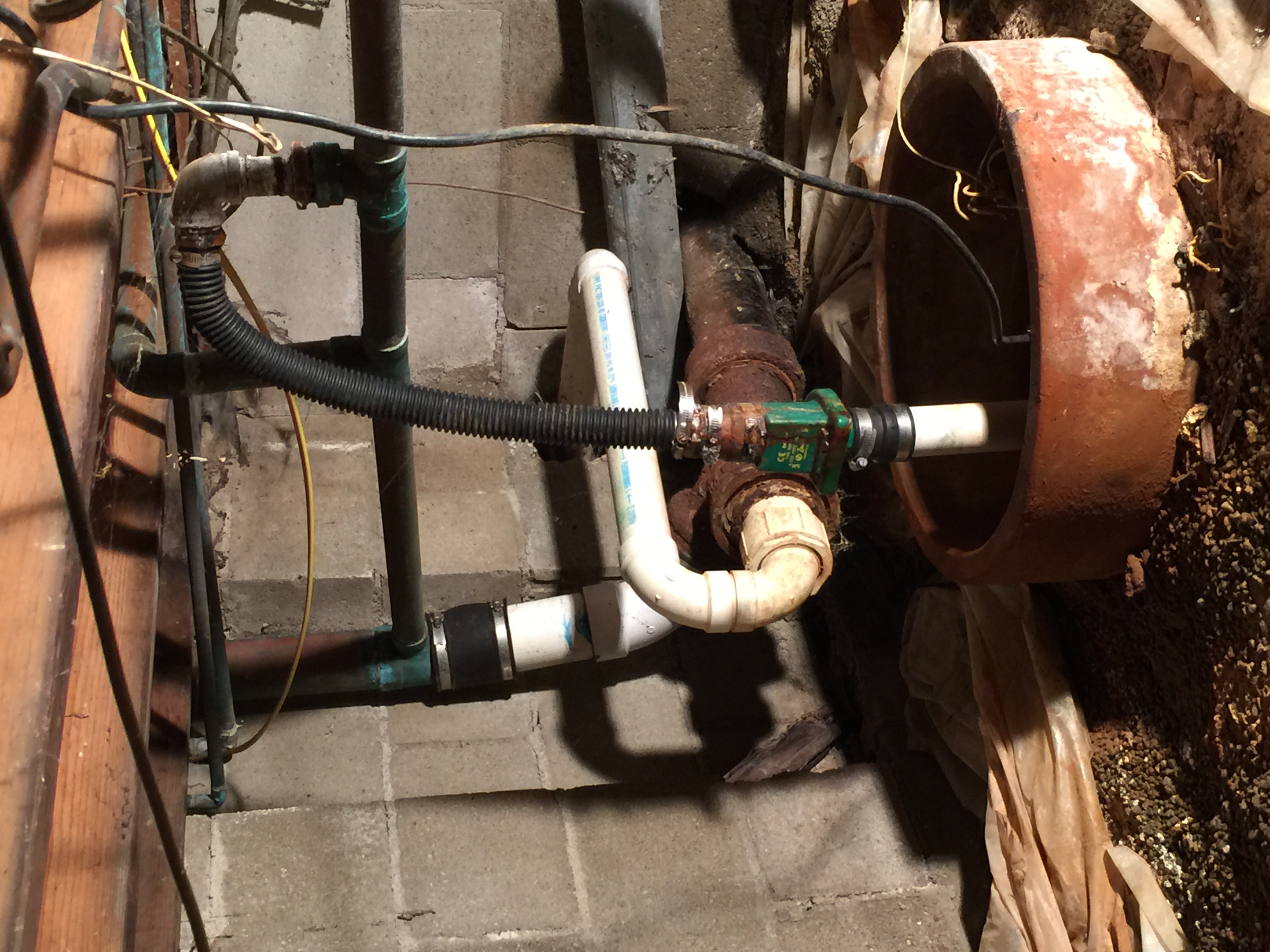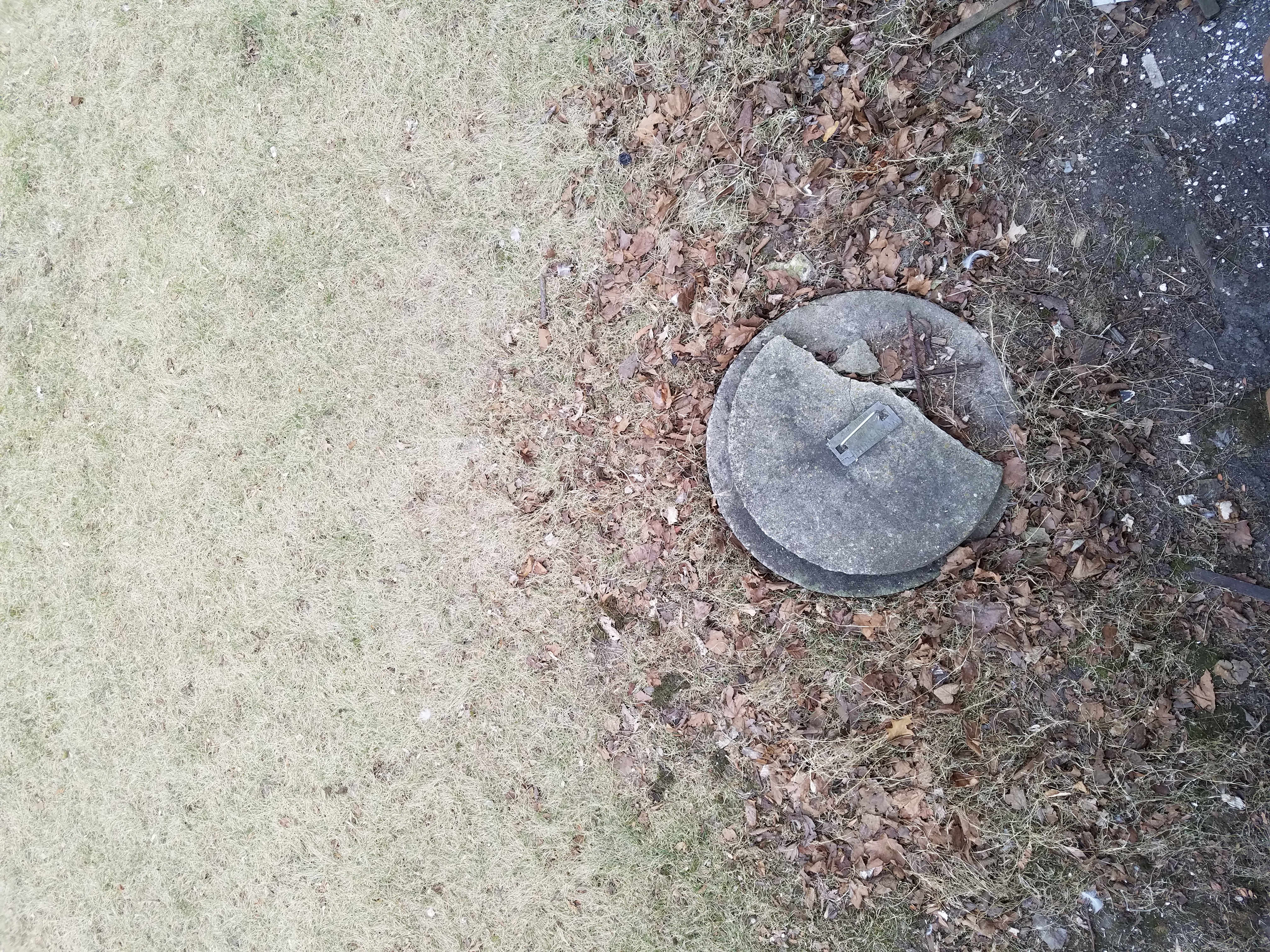This picture shows a single compartment septic tank. Septic tanks are designed to separate the waste. Only the clear effluent from the center of the tank should go into the leach field. The solids become a layer of sludge at the bottom of the tank. Bacteria composes some of the solids over time. There is also a scum layer at the top of the tank. The septic tank should be pumped every 2-4 years to remove the sludge and scum layers so they are not sent to the drain field.
This picture shows a leach trench. It is important that the trench be level so the fluid is equally distributed through out the trench. The trench is about 2 1/2 feet deep and needs to be at least 2’4" above the water table. The length and amount of trenches is determined by the anticipated load of the waste water system. This is usually based on the number of bedrooms.
One part of the septic system inspection is to determine the main drain and the items connected. In this picture the washer is connected to the main and the water soften drains into the sump pump pit then pumps into the house system. Lots of opportunities with this house.
This septic tank has 2 chambers and an inlet and outlet. The wastewater enters through the inlet baffle and is separated into 3 different areas in the tank over time. The 3 areas are the scum on the top, clear water in the middle, and the sludge on the bottom. As more wastewater enters the same amount of efferent is pushed to the second chamber to continue processing before leaving through the outlet.
Septic systems are not common in my area. Like most big cities they are utilized in a more rural location. I have taken this course to have a better understanding of the components and the potential problems to best describe the fundamentals to a client if needed.
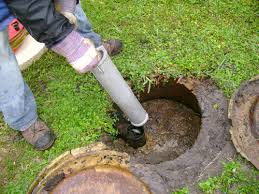
Article Garbage Disposals for Inspectors. These devices can have a impact on the function ability of a septic system. It is important for a potential homeowner to understand that the high use of the device may cause a blockage or shorten the life span of a septic system.
Here is a picture of the cover to a septic tank, the handle concrete should be on the inside of the manhole but it has broken down with time. this septic tank was installed in 1972. it si going to be replaced with a updated on this spring. it has a leach field. and it is working properly
i read the bag house dust filter system. i have always seen these sit outside of factories and knew they were for clean air. i didnt know their were 3 different ways of self cleaning. i would assume that most of them would be cleaned once a day to make the filters last longer.
Aerobic septic system at property. Department of Environmental Quality records were obtained with diagrams and specifications. After inspecting plumbing system inside home we checked the septic tanks and absorption field. Seepage noted at the tanks and pump sprayers did not activate. Recommended further evaluation and repairs.
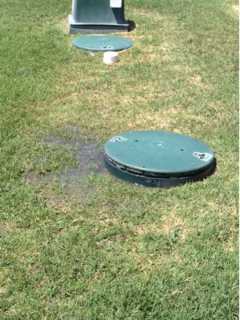
Septic tanks come in many different styles today. Many older tanks would be the single style, completely buried tank. In today’s installations it is not uncommon to have a tank with 3 risers and lids. These risers and plastic lids make the tanks more accessible for inspections and pumping, keeping maintenance more regular.
In this photo we see a septic installation in progress. This is a 1000 gal single chamber tank installed at a new mobile home. The install crew is in the process of filling the tank with water. Yet to be connected is the outlet pipe , distribution box and lateral lines.
Subject:Mastering Roof Inspections: Hail Damage, Part 1
In this article, it was pointed out the difficulty in finding agreement regarding damage to a roof from hail damage. It would be to advantage for an inspector to work with an adjuster for a piriod to get insight to what exactly constitutes roof damage worth noting on your report.
Septic tanks are made of concrete, fiberglass or plastic. They are watertight and stored below the grade. Waste water from the house drains into the tank where solids are separated for liquids. There are three layer of material in the tank. Sludge, clear liquid and the scum layer.
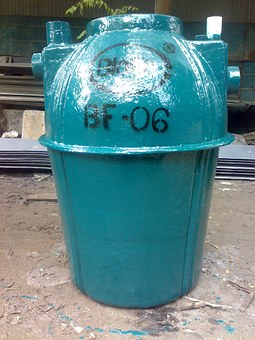
Septic tanks should be inspected once year. Some tanks are hard to find. The home owner or county records could help with the search. Inspectors should find out when the tank was last pumped and try to find the age of the system. They should see if the tank is large enough for the size of the household. They should check for visible defects within the tank as well as the leach field.
Septic tank and component locations. Having an inspection can potentially save money in lowering the risk of failure. Also not knowing where the systems components are located can cause damage by accident. This truck fell through a septic tank lid due to not knowing where the lid location was at. Suggest certified septic inspector to inspect system for possible further damage.
Dangers of saying your an expert. The dangers are opening yourself and the business to legal liabilities. Breach of contract by luring customers to your services. Declaring yourself as an expert the courts may hold you to a hire standard for possible implying a warranty due to being an expert.
This picture is of a deteriorated outlet baffle. The outlet baffle is one of the most crucial components of a septic system and they are prone to failure. The baffle in the picture was still functioning as designed but the advanced deterioration means it is only a matter of time before total failure.
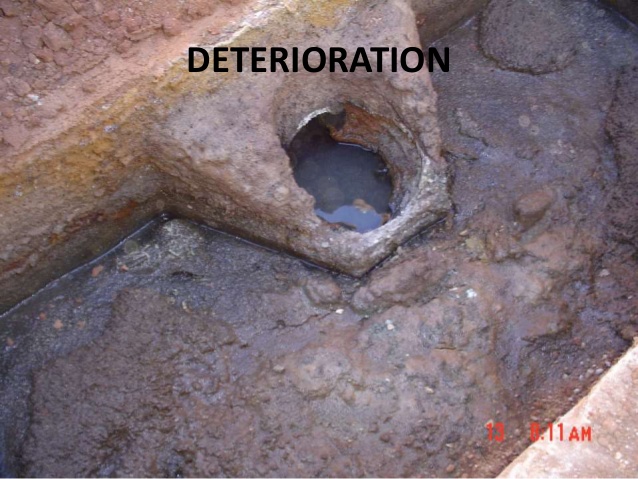
The image that I selected was the cutaway picture of the septic tank. I think that this picture is very helpful in understanding what the different layers of a tank consist of and how the baffles work. This picture makes it easier to explain the tank to our clients.
HVAC Condensate Concerns
High efficiency HVAC devices generate condensate as part of the normal combustion process. There is condensate line present to carry the liquid to the floor drain or the condensate pump. Flue gas condense at about 135 F or 56 C and the condensate has a PH between 2.9 and 4 so it is quite acidic. This can cause corrosion problems especially with metal components which can damage drainage pipes, septic tanks, treatment plants and other materials handling waste water. Condensation of flue gas produces an acidic solution containing concentrations of nitric, nitrous, sulfuric, and sulfurous and hydrochloric acids.
It is recommended that a neutralizing device be installed in the condensate line to avoid damage to the waste water plumbing system.
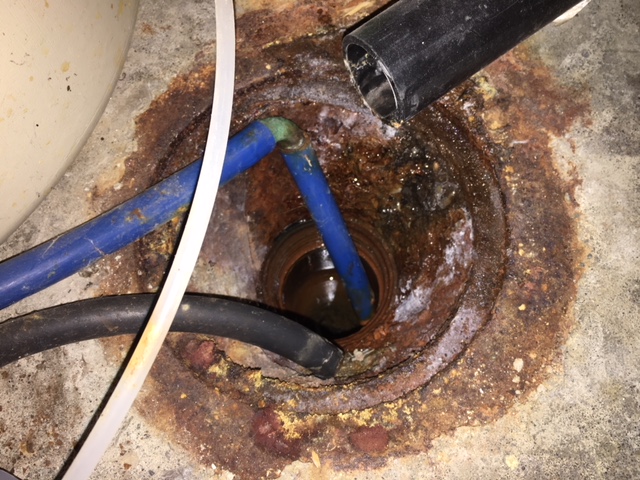
General introduction to Septic System
A septic wastewater system uses a treatment tank, a distribution system and an absorption or leaching area to process a homes wastewater. Systems can either be anaerobic or aerobic. In an anaerobic system the decay of solids relies on bacterial decomposition whereas in an aerobic system, air maybe introduced and mechanical agitation and pumps may mix and process the fluid also known as effluent.
The size of the system needs to be carefully matched to the home. It is calculated by bedrooms and the potential occupancy of the home. If the size of the home increases, by adding bedrooms or water using features the system may require re-sizing to fit the new square footage and demand.
Systems need to be serviced and checked regularly. The sludge and scum need to be pumped out at planned maintenance intervals for the system to work efficiently.
It is not easy to inspect a septic system fully as many components are not readily accessible. However,
many things can be checked which are well explained in the Internachi course. A system may pass as satisfactory, further investigate to be conclusive, satisfactory with concerns or as unsatisfactory.

